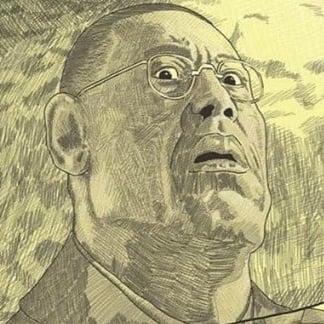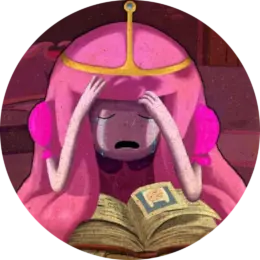Look man, why don’t we talk about spears across cultures?
It’s a weapon of the people and FAR more useful.
Swordsman: Noooooo!! You can’t just poke me from all the way over there! No fair!!
Pikeman: Haha 20 foot pole go brrrr
I keep a pitchfork handy as a wall decoration but I live in an apartment. It is my reminder of the need to fight back in the class war.
I live in a house in San Diego. I have a pitchfork, easiest way to spread mulch.
The crossbow is for defense.
I wonder if a repeating crossbow counts as an automatic weapon for the purposes of law.
I’m pretty sure repeating crossbows are illegal in my state, and all crossbows are illegal for hunting unless you’re disabled.
Kaladin?
BRIDGE
SIXFOUR!Four 😂
Hahaha oops. I don’t know where six came from. 😂
The Church of the Survivor?
Crossbows. We need more crossbows.
Chinese automatic crossbow go brrrr
I’m pretty sure the automatic crossbow was just a party trick and never actually deployed in battle.
The only downside is that it’s not good for slashing (unless you count some variants, like halberds, as spears), but the extra range makes it usually better for 1-on-1
You can definitely slash with most spears, there’s just less surface area to cut with compared to a sword.
You can bonk them on the head with the haft too. Every part of the spear is dangerous. If you are trying to get in under a good spear user it is so scary. They are so dangerous you can’t really practice with them at full speed.
Worth pointing out that long sticks in general are pretty OP. Low cost, low skill floor, high skill ceiling, lightweight, works well one on one and works well in a formation. It’s only downside is the inability to cut, but that’s why you end up with a spear and not just a staff. Spear gets all the glory but the staff does most of the heavy lifting in that relationship.
That’s why the smartest Ninja Turtle chose one as his weapon.
It’s the only turtle that you can beat the SNES game with too because of said weapon
Breath of the Wild gave me a strong appreciation for spears.
Most of the pull arm weapons eventually devolved into halberd type pulling and slicing weapons. They were used primarily to remove mounted troops from the tops of horses, while slicing off their limbs.
There were lots of variations of halberds, pole axes and the English Bill.
There is a great book on the matter. Weapons in international encyclopedia from 5000 BC to 2000 AD.
Poleaxes were certainly used for more than yanking people off horses—they were the knightly weapon of choice for a couple centuries at least. I’d hardly call it a “devolution” of the spear.
I would even say the weapon of choice for men-at-arms in general, not just knights.
Yeah I meant to say evolved, but you know autocorrect…
Slashing is overrated. They’re less likely to connect because they’re slower and easier to see (it’s easier for humans to detect movements across your vision than movement directly toward you). They also have less effect since the force is spread out over a larger area. Yes, you can generate huge forces in a swing if you really wind up and hit with just the right part of the weapon or tool but that haymaker is never going to connect against an opponent who’s still awake.
The big advantage of slashing is that it’s easier. It’s the simple dumb response when you had someone a heavy thing. It also often works better than just using your fist or dropping the weapon all together but it’s generally not the best way to use a weapon.
And yes, there are exceptions. Slashing with knives and one handed sticks can be extremely effective. But even with those, stabbing tends to be at least as effective and all these effects are exasperated with larger weapons. Just take a metal bar the size of big sword and swing it at a tree. Then see how many times you could poke that tree in the same time.
Not to mention that they are usually better in many against many as well.
Bilhooks are nice because you can stab, chop, and pull your foe down off of their high horse.
Swords look cooler. Almost no one used a sword on the battle field throughout history. Everyone used pole arms of some sort. But swords seem cool, so get much more attention.
The Japanese used katanas as their daily carry weapon of choice. In fact, samurai would carry two swords with them!
However they had a very low crime rate. Ironic.
But not on the battlefield, they’d use naginata or something like it for that.

Here is an alternative Piped link(s): https://piped.video/ULQlg8RgkkA
Piped is a privacy-respecting open-source alternative frontend to YouTube.
I’m open-source, check me out at GitHub.
Taco has entered the chat.
Crime is bound to be low when the consequence is death, and shame to your entire family for the rest of their lives.
For many it was very much ceremonial and status symbol to carry them though and the wakisashi was more or less never used at all.
It’s a weapon of the people
U r joking, the people’s weapon is the > scythe. I remember hearing in history class about how it was used in a war/revolution
no, it wasnt the marxist oneafter putting the blade in vertical position, and that it was so effective that for a time it became the national flag.And yeah, also the communist have it
now im talking about the marxist one.An agricultural scythe would likely be a terrible weapon. It is designed for slicing though grass and brush, close to the ground, often with the snath shaped ergonomically to better facilitate this. Also, Austrian scythes in particular after curved three-dimensionally in an asymmetrical manner. Using it as a polearm would be incredibly awkward (D&D really does the scythe dirty) and there is not a good way to mount the blades vertcally in either main branch of European scythe, without modifying the part of the blade that attaches to the snath. But then, you have what amounts to a primitive halberd with a more fragile blade.
Now, if you mean sickle, I can definitely see more agreement there, though a pike or spear would be easier for most to use as a weapon as the motions used to harvest grain with a sickle are quite different from those that would be needed in combat.
You’re correct, but as an FYI to anyone reading, they are the same family. It’s like the square rectangle thing. A scythe is just a type of sickle. Hay sickle is a scythe.
So it’s a totally natural thing to be confused about.
Polearms in general were ubiquitous throughout history. Pretty much anyone can pick one up and get the general idea of poke the enemy with the sharp end and use the length to keep them away.
Historically accurate shitpost
Does lemmy have a History memes community yet? I miss that from reddit
There’s gotta be something on lemmy or kbin
There is! https://lemmy.ml/c/historymemes
Also mythology memes? 🤔
Manga-order accurate shitpost
Exactly. Their swords had to be well-honed simply because they would break otherwise, because the ore they were using was absolute shite.
These weren’t God slaying weapons, heck even after all that labour, they’d still struggle against just about any slash resistant armour. Basically any swordsmith from a country with actually decent ore could trounce these swords with ease.
Imagine how happy they would’ve been to just heat up some spring steel and hammer on it for a bit and make a better blade with a fraction of the effort.
You still have to admire the craftsmanship and the length they went or still go.Yeah. When you really think about it, Europe really did start on easy mode in that regard. Continent was chock full of good quality, easily accessible ore of all kinds.
Meanwhile, Japan had to fight tooth and nail just to get any workable metal. If I remember correctly, most of their “ore” was from iron-rich sand.
As they say, necessity is the mother of all invention. If you need extremely high quality craftsmen just to make a half-decent weapon, that’s what you’ll get (as long as money is no object).
Tbh it’s surprising that Japan is as strong as it is with the shitty spawnpoint they had (basically no or shitty resources)
In a way, it’s kind of like bri’ain, innit?
Honestly though, they were kinda shit for most of their history. Japan didn’t really become a major world player until after the late 19th century, when they realised just how far behind they were.
Well, they had their presence in the late 16th-early 17th century
Japan basically got the chance to be something bc Qing Dynasty refused to work with Imperialists colonists. The americans and portugues would have loved to be on China instead of the shitty Japan. Even thailand would have been mlre interesting to colonialists.
A major mistake that haunts the entire region to this day.
What?
There’s this whole anthropological theory that people’s from regions that have less resources resort to pillaging as means to survive; after many generations they become so good at it that they just simply continued to do it.
On the flip side, you have countries that have it all, in particular Asian and American countries, that never developed such a need because resources were abundant.
Oh shit, it’s the “hard times create strong men” thing
Pretty much. Look at how India and China have people who overwork and overstudy. Meanwhile many western countries have a good work life balance and have a lower / easier standard in education because they don’t need to do much to survive.
India and China are rich as hell though, they have a ton of resources. Shouldn’t they have more laidback populations then?
Guess it has to do with the fact that Europeans, primarily, have been fucking India and China over the past 100-200-ish years. Resulting in many Indians and Chinese not having access to their own reaources and so creating that whole overwork/study culture thing.
Modern China started late bc of civil wars but chinese culture including confucius was always about educating until you can do well in imperial exams, so you can serve the country.
Yeah, that makes sense.
India isn’t, it’s a 3 trillion economy for a billion plus people. Per capita that’s very low. India recently did a lot of expeditions to try and find oil but had no luck. There are a lot of spices (which were just stolen for years by colonial powers) but the value of those has reduced compared to newer technologies like semiconductors.
China has just become rich recently, there should be a decline / easing of pressure on people in the next few years / decades.
That’s not my point. Japan is a rich country nowadays but it does not have a lot of natural resources ancient people could use, which is what I’m talking about. As the theory goes, a resource-less country should give rise to an expansionist, aggressive society in search of said resources whereas countries like India and China, with plenty of water, fertile land and valuable minerals should give rise to more laidback societies, which is the opposite of what you’re claiming.
They’re talking about right now. Historically India and China were relatively wealthy (by the standards of the time), and so were usually on the receiving end of invasions.
I think that would work for the 19th century and before, not in the present day and age.
China is pretty poor individually. Its the sum. India is simply poor entirely outside of some billionaires
Damn, the storm’s coming then
They’re min-maxing for an island nation playstyle. High focus of fishery, invasion defense +10, special perks to survive natural disasters…
Special perks to use natural distasters for defence.
You made a mongol cry with that comment
I think you’re missing a bit here: The Japanese were historically hunter-gatherer societies far longer than their mainland neighbours. The reason appears to be a large abundance of food and resources, to the point that the Japanese hunter-gatherer societies are believed to be some of (if not the) only hunter-gatherer societies that formed year-round stationary settlements, because they had enough resources to not be reliant on wandering, as other, nomadic societies had to.
Historians believe that the Japanese only converted to agriculture once rice strains and agricultural methods that were suitable for their climate had been developed in Korea for over a thousand years, because thats how long it took to make agriculture able to compete against the hunter-gatherer lifestyle in Japan, due to the vast amount of resources.
Source: Guns, Germs and Steel (Jared Diamond)
That’s not saying much considering that their neighbors included the Chinese, which has some of the oldest history of farming in the world. The Loess plateau was farmed 10,000 years ago!
Also, guns germs and steel has been thoroughly discredited by historians and archaeologist who consider the authors work bullshit.
“I argue that although Diamond makes interesting points, his work from Guns Germs and Steel to Collapse is a distorting disservice to the real historical record.”
https://www.livinganthropologically.com/archaeology/guns-germs-and-steel-jared-diamond/
Let’s not be one-sided here: Guns Germs and Steel, like most other works, has shortcomings, but I think it is more fair to say that it has caused a lot of discussion. A long list of experts, as late as this year, back up the book to varying degrees.
Even if you choose to discredit the book, I’m making the argument that Japan had a lot of resources that made hunter-gatherer societies viable enough that they actually formed year-round settlements. That’s a claim I have yet to see someone dispute, as there is a bunch of archeological evidence backing it up.
I totally disagree. If you actually read that Wikipedia article, the praise comes from people who are in totally unrelated fields like international relations. By and large, archaeologist and historians have discredited that that book and consider it a work of fiction.
Any case, I don’t know enough about Japanese prehistory to really comment one way or the other regarding your claim. I believe it’s probably pretty plausible that Japanese had made permanent settlements, probably based on hunting gathering and fishing. Fishing of course is and has been one of the main staples of food for Japanese as evidenced by their current consumption of something like 40% of the world’s seafood.
Was this before or after the yayoi period?
If memory serves me right, I’m talking about the Jomon period, which is the periode from about 10 000 years ago, up until about 2500 years ago, when the Yayoi period started. I believe the start of the Yayoi period is marked (among other things) by the spread of agriculture throughout Japan.
Checked it out and no, the jomon period ended around 300 BC. So while Alexander’s successors were fighting each other Japan had barely discovered agriculture
Yes: 300 BC is about 2500 years ago, which is roughly when the Jomon period ended.
My point was that the reason agriculture had not spread to japan yet wasn’t because they weren’t aware of it, but because Japan was so resource rich that it wasn’t able to compete as a lifestyle.
It’s well documented that the jomon culture traded with Korean farmers for centuries or even millennia before adopting agriculture themselves. This is an important reason for why they weren’t wiped out by disease when they came into contact with agricultural societies. Historical evidence also suggests that they were better fed than their agricultural neighbours in Korea and northern China in that period.
In short: The reason Japan started developing e.g. metalworking much later than their neighbours wasn’t a lack of resources, but an abundance of them. Which led them to not adopt agriculture before neighbouring societies had developed it sufficiently far to become competitive. Technology and social stratification typically follow once agriculture is adopted.
Then why are all their resources either inexistent or scarce? Did they use them all while still being in a voluntary state of prehistory?
Yes and no: the resources that made Japan very viable for hunter-gatherer societies are very different from the resources that make an area viable for agricultural societies.
Whereas agricultural societies value open areas and metal ore a lot, the jomon societies lived primarily off foraging and hunting in wooded areas. With the rise of agriculture, those areas largely disappeared, to the point where Japan was almost deforested.
Seafood is also something Japan had a huge abundance of, but like most of the world, they overfished their stocks.
For the “no” part: Resources like metal ore, coal, oil, waterfalls for hydropower, etc. do not make a hunter-gatherer society less viable, but can serve to make an already highly technologically developed society even more viable. The point being that although Japan had an abundance of resources making hunter-gatherer lifestyles much more viable than in most of the world, they can still lack in resources that are valuable to Iron Age and later societies.
The result is that
1: It took longer for agriculture to become a viable competitor against hunting/gathering in Japan.
2: Once agriculture was adopted, the resources in demand were not in high supply (as they weren’t there in there in the first place).
Glad I’m not the only one who thought this. There are definitely big differences, but in some surprising ways, Japan always struck me as being like the England of the east.
I always think it kind of is! Island culture with antagonistic relationship with the mainlanders. Weird tea-based rituals. Imperialism. Longbows. Northerners considered hairy savages.
A lot of that is because in an attempt to rapidly modernise and prevent itself from being colonised, Japan imported a ton of ideas from all over Europe, including imperialism.
I mean, arguing over the best sword is a silly thing to do anyway. Swords are sidearms. People carried them around in case their actual useful weapon broke, or for some reason they ended up fighting in a melee unexpectedly. Could be you were ambushed, could be you’re an archer that got caught in the fighting. Point is, if you’re in a sword fight something has already gone very wrong. Spending a bunch of money on a fancy high quality sword is a thing only rich people did, not soldiers, which is why fancy swords became associated with status in the first place.
Too many One Piece fans are going to get shot in the stomach by crossbows if we ever go back in time. Just running in with Katanas in their mouth.
Responding the muskets with punching
Dont you know the moment you stick a sword in your mouth it instantly gains the ability to cut through steel and even dudes made of diamonds if you try hard enough. ;-)
well swords were also used for personal defence, i would argue that’s the main use-case historically.
A short sword and a buckler hung on your belt is very portable and extremely useful to have if you need to suddenly defend yourself while out on a road. Compare this to a polearm, which while better at keeping the nasty man away so he can’t poke you with his sharp stick, is also a big clunky thing that you have to lug around.
That’s one of the things I meant by ending up in a melee unexpectedly. Presumably most people aren’t going around doing things they know will end up with them needing a weapon for self defense. It happens, but it’s not usually plan A. You are right though. That was a reason to have a sword. The theme is that swords were good when you needed something you could carry without it getting too much in the way. That’s what they’re good for. If you expected to be fighting you’d bring something better.
Swords were a personal defense status symbol. They were fairly expensive, required training, and were often legally restricted deoending when and where we are talking about. This is why they continue to have sich mystique.
Most peope who needed self defense used a stick
While to some degree that’s true, it’s not like a sword was some impossibly expensive thing, just like how most people can afford a car nowadays most people could probably find some sort of sword in the past, or at least a particularly large dagger/knife.
As for legality, that’s what messers are for.
Oh yeah, large dagger was definitely an option too. Bollucks dagger was a standard, for instance
Yepp, also part of the reason why students and the watch tended to get on badly in Europe. The students lived under university laws and didn’t mind showing it off by, among other things, carrying a sword.
if you’re in a sword fight something has already gone very wrong
That’s always my first thought.
Oh my g.o.d! Do you think a swordsman main weapon was a bazooka? I’m not an expert on Japan, but in Europe the side arm was a dagger, which was very commonly used alongside with certain types of swords such as rapiers. Arches did not carry swords at all, though they could have had knives. A sword was a nobleman’s weapon and a peasant would forfeit their life if in possession of one (archers included). The same applied I Japan.
Depends on the place and time. Everything before the invention of modern firearms didn’t all have the same rules and norms. Spears are just a dramatically better battlefield weapon than swords though, while also being cheaper, and bows are better than spears. There were times and places where it was illegal for most peasants to own a sword, and it did even occasionally happen that they were levied without being allowed to carry one, but that was pretty rare. In fact, in some places men were required by law to own one in case they were levied. By the time swords were widely outlawed professional armies and mercenaries were starting to be more common, and those were absolutely allowed to have swords.
It did happen more in Japan, but even a halfway functional sword was crazy expensive in Japan. Their iron just isn’t good for making cheap swords.
Ah… the endless plight of the Katanaplonkers…
Listen: The more you defend the Katana, the more fun it is to troll you by pretending anyone actually cares.
It’s a sharp metal stick, alright. Stick 'em with the pointy end.
BUT IT’S PRIMARILY A SLASHING WEAPON REEEEEEE
Stick 'em with the pointy end.
Instructions unclear, got my dick stuck in the pointy end
In?
Don’t ask, just halp
Somehow, that’s still better than the logical alternative.
(User named ‘pointy_end’ enters the chat)
The average croissant has more folds than the average katana
Then lets hope the french dont discover smithing
Delicious swords?
There’s so much butter in my batard sword
They’re like the revolvers of swords
Revolvers just feel so much more satisfying to shoot than an auto (at least for me).
This reload time is exhilarating ! ! ! Reloading like this…ITS A REVOLUTION!!!
There’s nothing like the feeling of slamming a long silver bullet into a well greased chamber
Heh
You’re pretty good (っ´・_・)っ
That’s what she said. 😏
They’re cool, but you know what’s really cool? 16 rounds in a magazine.
Sure sure ; if I was actually going to charge into a yakuza den or something I’d want an auto, but since I never plan to be remotely close to a gunfight, the slow reload and unreliability isn’t a huge deal.
That’s it. I’m sick of all this “Masterwork Bastard Sword” bullshit that’s going on in the d20 system right now. Katanas deserve much better than that. Much, much better than that. I should know what I’m talking about. I myself commissioned a genuine katana in Japan for 2,400,000 Yen (that’s about $20,000) and have been practicing with it for almost 2 years now. I can even cut slabs of solid steel with my katana. Japanese smiths spend years working on a single katana and fold it up to a million times to produce the finest blades known to mankind. Katanas are thrice as sharp as European swords and thrice as hard for that matter too. Anything a longsword can cut through, a katana can cut through better. I’m pretty sure a katana could easily bisect a knight wearing full plate with a simple vertical slash. Ever wonder why medieval Europe never bothered conquering Japan? That’s right, they were too scared to fight the disciplined Samurai and their katanas of destruction. Even in World War II, American soldiers targeted the men with the katanas first because their killing power was feared and respected. So what am I saying? Katanas are simply the best sword that the world has ever seen, and thus, require better stats in the d20 system. Here is the stat block I propose for Katanas: (One-Handed Exotic Weapon) 1d12 Damage 19-20 x4 Crit +2 to hit and damage Counts as Masterwork (Two-Handed Exotic Weapon) 2d10 Damage 17-20 x4 Crit +5 to hit and damage Counts as Masterwork Now that seems a lot more representative of the cutting power of Katanas in real life, don’t you think? tl;dr = Katanas need to do more damage in d20, see my new stat block.
This is the most virgin thing I’ve read this week😂😂
thrice
lmao ur names just hitler
The original
no bullying
Bruh
It means three times
no it means thirsty rice
So, raw rice? Rice thirsting for a good cooking? All raw, dried, rice is very thirsty.
I honestly can’t tell if you’re trolling. because this is the dumbest thing I’ve read on the internet so far today. It’s just a longish saber my dude. It’s not made of fairy magic. They weren’t even the finest blades to exist at the time that they existed.
It’s a copypasta, I’ve seen it on reddit before. I’m not sure if the original poster of that pasta was trolling too, but this one most definitely is making fun of them.
God, weebs are so dumb and annoying. I love the East, but Japan is backwards in a lot of ways. I mean, every country is, but weebs act like Japan is somehow far above the rest in every conceivable way.
When I went to live in Japan for a year on a fellowship, I was intensely scrutinized for a bit until they were sure I wasn’t a weeb. Only then was I more welcomed socially. For some reason, people don’t like being fetishized. Who knew?
Both groups have way too many incels.
What does being virgin have to do with this?
Virgins and incels are different
Ive found that with weebs theres a lot of overlap.
They seem to idolise asian cultures where the women are seen (or atleast portrayed) as more subservient and reserved and as a westerner they think they would be unique and special.
Its not as outwardly hostile as “incel” thinking but it comes from a similar place of insecurity.
Japanese swords: Surprisingly good, considering.
Welcome to the rabbit hole oft YT Creator Shadiversity. He also hates nunchucks with passion and loves sticks.
Yes! Sticks are the best. Nunchucks are just broken sticks with string.
Poorly repaired broken sticks.
Sticks with a pointy end are the oldest and most effective hand-to-hand combat tool ever invented.
Ok tbf katanas are cool but so are longswords and axes.
Viking hand axe, my love
I don’t know shit about metallurgy, but if they had better iron and still folded it 1000 times, would glorious Nippon steel be even more glorious?
There is no practical benefit to folding regular steel
Does it help remove impurities or something? I should try to read about this later.
There are good impurities carbon, maganese, silicon, nickel, magnesium, etc. (aloy elements) with benefitial properties and bad impurities like sulfur, hydrogen, oxygen, nitrogen (gases traped in the iron) that are essentialy holes in the crystal structure. The best way to get gases out of iron is to heat it up till its liquid and spin it in a centrifuge. The elements will layer themselves depending on their density. Gases will move to the center of the centrifuge and escape out of the metal.
The steel you can buy to make knifes/swords nowadays is pretty good to start with if I understood it correctly. Many fold softer steel around the cutting edge to give the blade more flexibility, but impurities shouldn’t be a major issue with modern steel.
I know shit about this as well, but I watch way too many videos so I’m obviously an expert 💖
Japanese metalsmiths would add carbon in the form of charcoal powder, and they would beat this into the steel and fold it into layers. High carbon steel is very high strength and holds a very strong edge, however it is brittle.
Japanese metalsmiths wood alternate different types of steel in the composition of a sword, including softer mild steel that would form the main spline of the blade, allowing it to deflect because it was more malleable and less brittle than the folded deal used on the blade.
Imagine a jar full of marbles. Imagine there’s a shit ton of random large gaps between some marbles across the jar. You can remove those gaps and redistribute the marbles more evenly by smacking the jar. You then end up with bigger groups of closer marbles.
Folding is smacking the jar. It redistributes the atoms in the material in a more homogeneous, more consistent, more uniform way. That’s desirable in materials that are made up of lattices, e.g. steel. Makes them stronger overall because now you have larger groups of atoms connected to each other, fewer gaps within the material.
deleted by creator
I once read that folding regular “good” steel is actually decreasing it’s quality because you start hammering out the carbon (?).
Take this with a grain of salt though, I can’t remember the source. Would be nice if someone with actual knowledge in metallurgy could confirm this
deleted by creator



























